the year of the spotted salamander? egg masses galore
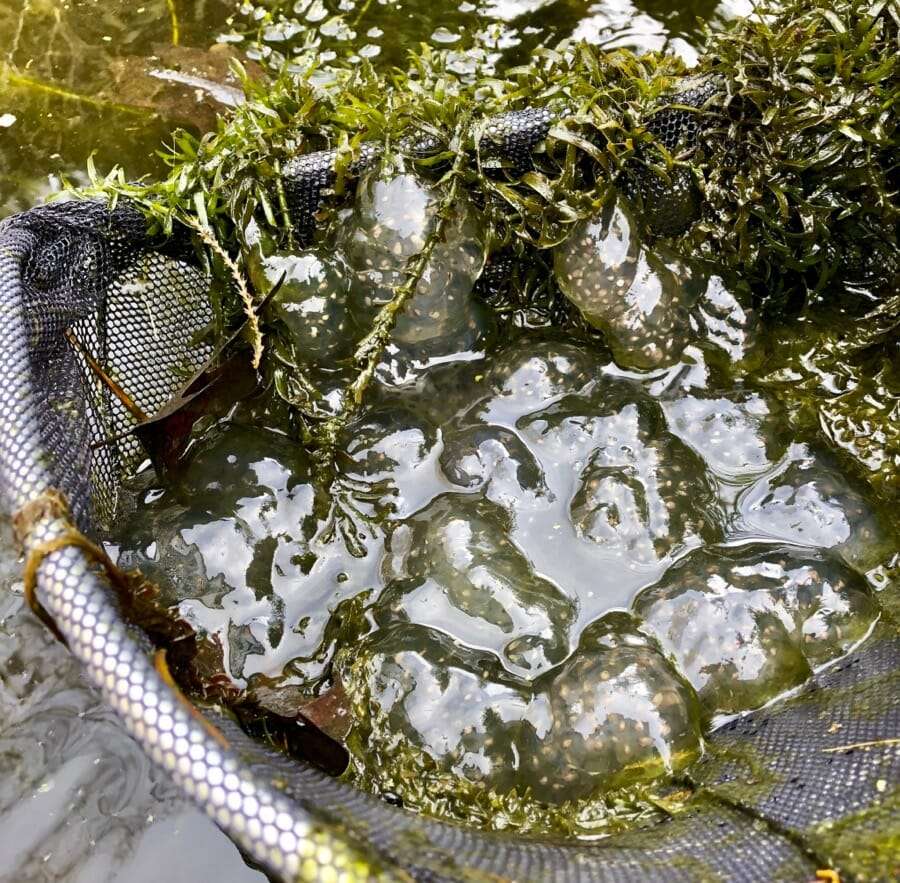 GIRLS’ NIGHT OUT apparently happened in my little back water garden not so long ago. (Um, I was not invited.) I know what went on, though, because I accidentally netted a whopping 16 spotted salamander egg masses—”caught” briefly while skimming leaves, then instantly released—each the work of a different female spotted salamander.
GIRLS’ NIGHT OUT apparently happened in my little back water garden not so long ago. (Um, I was not invited.) I know what went on, though, because I accidentally netted a whopping 16 spotted salamander egg masses—”caught” briefly while skimming leaves, then instantly released—each the work of a different female spotted salamander.
Yes, each female makes only one such mass; I have it on good authority from Charley Eiseman, author of the field guide “Tracks and Sign of Insects and Other Invertebrates” and the most fun person ever to take a walk with. But I digress. Today’s topic:
Guess I will soon be Aunty to a lot of little Sallys.
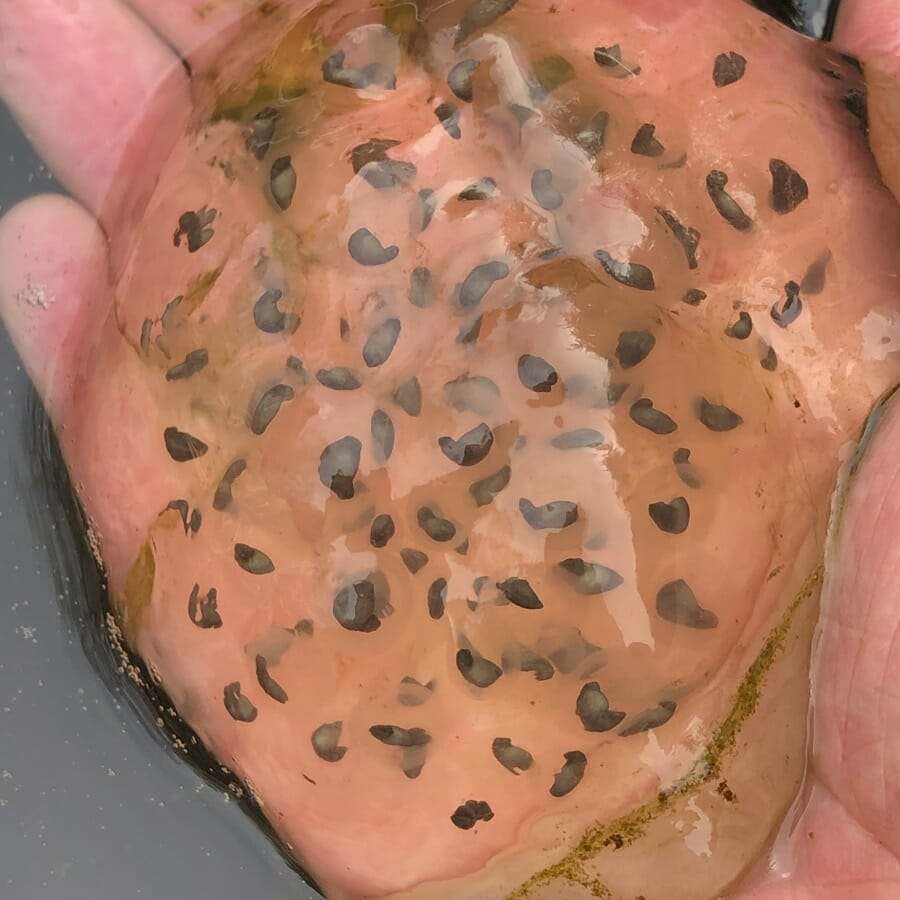
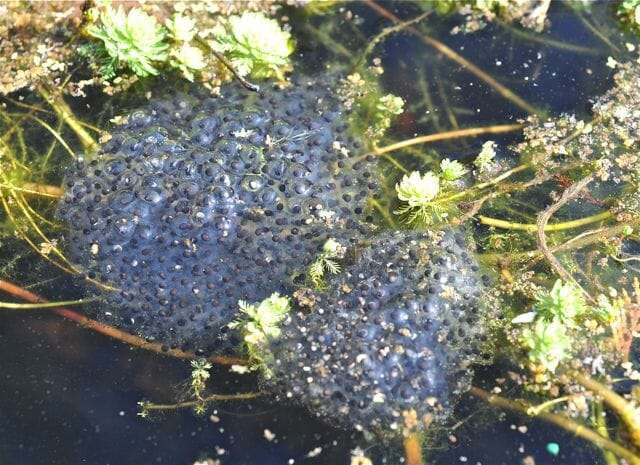
“Spotted salamanders begin migration to breeding ponds at night, during the first rain following the thaw of snow. Males respond more quickly to the rain and move faster than do the females… They also stay longer in the ponds than females do, probably to increase their chances of fertilizing more eggs each year. The number of males present in the breeding pools is greater than the number of females, so when the females arrive the males swim about vigorously, rubbing and nosing each other.
“Males produced blobs of sperm called spermatophores (up to 80 per male), and the females take these spermatophores into their bodies to fertilize their eggs. Each male may fertilize several females, and each female may take up spermatophores from several males.
“Male spotted salamanders may compete with other males for the chance to fertilize females. They push other males away from females, produce as many spermatophores as they can, and sometimes cover other males’ spermatophores with their own.”
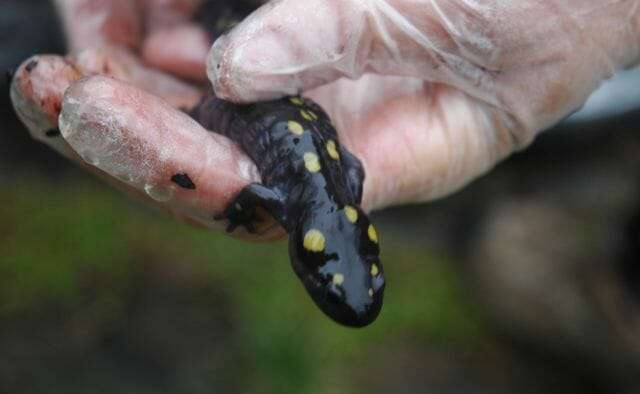
And how about this, from Mass Audubon:
“This salamander can grow up to 9 inches long and live for more than 20 years.”
Want to learn more about identifying eggs you may see floating in water? I found a handy-dandy guide to amphibian egg ID online, at least for my region, created by Karen Ceballos, formerly of the New York Master Naturalist Program, Cornell Department of Natural Resources. I suspect a Google search can land you one of your own, if you are not in the Northeast. Needless to say: except when inadvertently disturbed such as by my net for a half a minute, admire but don’t disturb such miracles-in-progress.


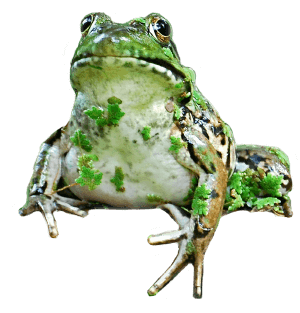


How lucky you are! I haven’t seen any so far this year —- last year there were many fewer amphibians than usual here in southern tier NY.
One of the things I love about a rural setting is all the “neighbors” like these guys. :)
Southertier here. Cattaraugus County. Our drive home from limestone NY to CATTARAUGUS. They were all over the road so researched them cause it was amazing to see.. seen this post..its 52 degrees out. Raining and no moon. Its October 26th 2019
I too think you are lucky. You have created a marvelous habitat out there in NY. My big happening this week was hearing tree frogs singing. Hadn’t heard that in a couple of years. It has been quite wet this spring so far. Maybe that is a factor.
Lots of peepers this year even here up high on my hillside. I think maybe because it has been such a moist year? Don’t really know.
What a great reminder to not only go outside to look around but go outside to look what you can SEE. I find Salamanders but have never seen any egg masses or have even thought about looking for these egg masses.
Thank you!
Usually I have several masses in each little garden pool, but this year, a bonanza! Later there will be green frog and bull frog eggs on the pond surface…and most years early on big globs of wood frog eggs (but none this season).
I had many frog egg blobs in my pond two weeks ago. Then last weekend, I saw bear scat and inly a few frog egg blobs left. Do you think the bear ate the frog eggs? They were at the side of the pond so easy for the bear to reach.
I don’t know, and wonder if it’s just coincidental. I have never read specifically that they do, but I know they do eat fish.
I’m thinking it will be a good year for salamanders here-we’ve had so much rain since last fall there are many more vernal pools and those that show up every year in the spring have expanded. I used to find spotted salamanders as a child but only saw one last year when clearing winter leaves-and it was in a dry location near a mailbox! (must have been traveling to the nearby swampy area) Thanks for the identification-I’m sure I’ve confused the eggs by not examining closer.
What a wonderful article!! Our large amphibian pond is filled with eggs and sweet sounds of the Spring Peepers! Each spring i take our two granddaughters up to the pond to dip our hands in the water and gentler lift up the “jelly masses”, be amazed, and slowly return them to the water. We live on a farm in western Pennsylvania and so grateful to have these first messengers of Spring!
So good that you are showing the girls how the world really works!
I never failed to be amazed — spring after spring — but this year is crazy! So many.
I’ve never seen a Spotted Salamander except for years ago in the Bronx Zoo’s Reptile and Amphibian House. Good to know about the eggs. I remember seeing small salamanders in fast running streams, never in a pond. How interesting.
Wonderful creatures…and they can get big!
I have inch long ,white worms appearing in my little plastic pond each spring right after it gets cleaned out and refilled. I ponder what they are. Any ideas?
Just found a blue spotted salamander in the garden today. It’s a little cold here in Massachusetts, so it wasn’t moving around much. Left it in a nice spot under a plant–far way from rakes and gardeners.
No newts or salamanders in my town yard. But I did have a huge toad for awhile. I was so excited. It was in bottom of my steep sided horse trough little pond. I piled some rocks so it could get out. Found it dead and partially eaten. I have a killer goldfish.
Gobs and gobs of wood frog eggs ( and something else I assumed were newts) in our pond in Canaan NY this year. Saw frogs and beers too but the rains created a lot of down stream action so I’m guessing that’s why they dispersed. Will examine the masses more carefully next year . Thanks for the tips.
This is SO COOL!
Here is a link to the annual festival at Shades Creek in the Birmingham, AL area.
https://shadescreek.org/salamander-festival/
There should be good photos. Shades Creek is a fascinating place. A gorgeous book has just been published, setting forth its long history.